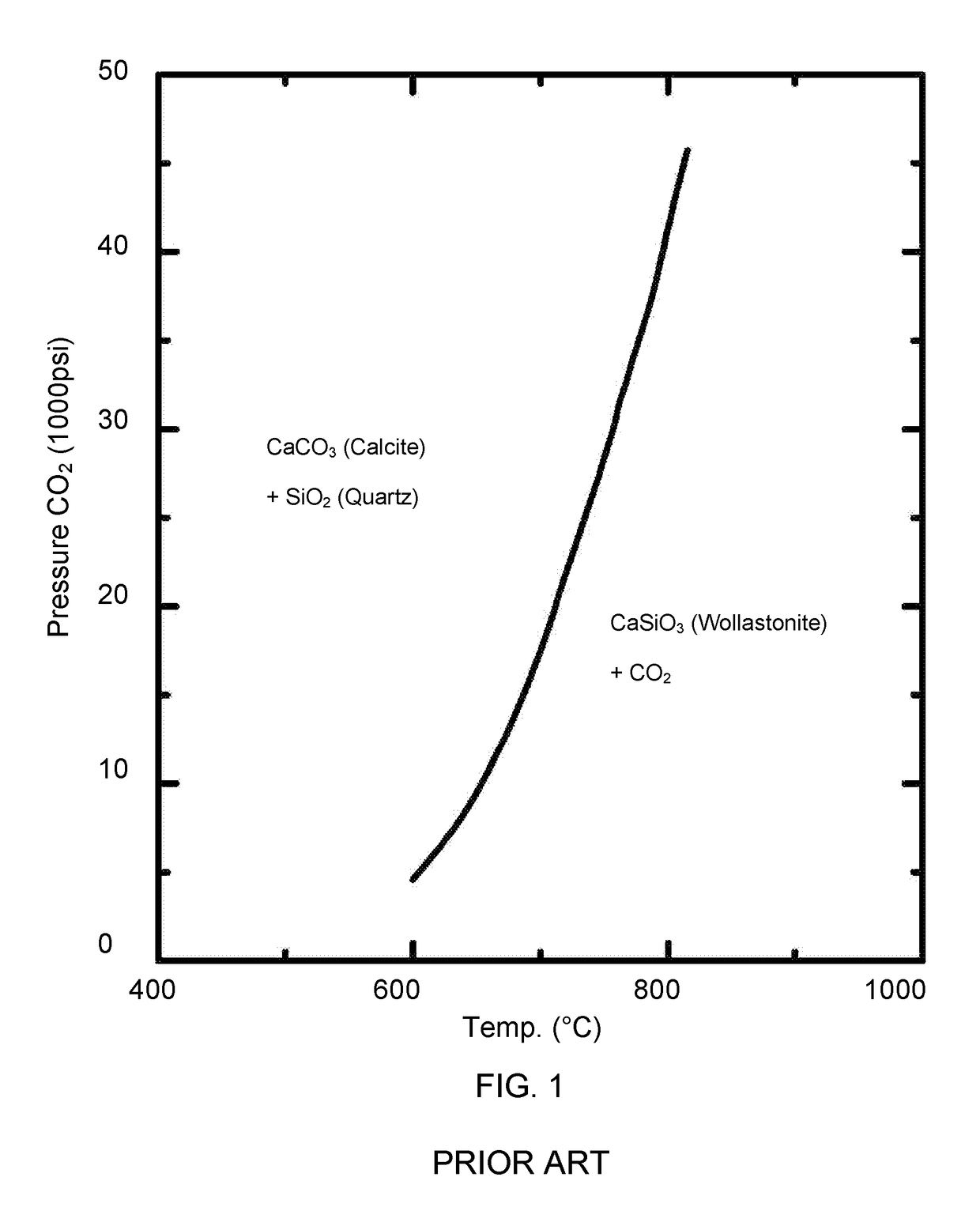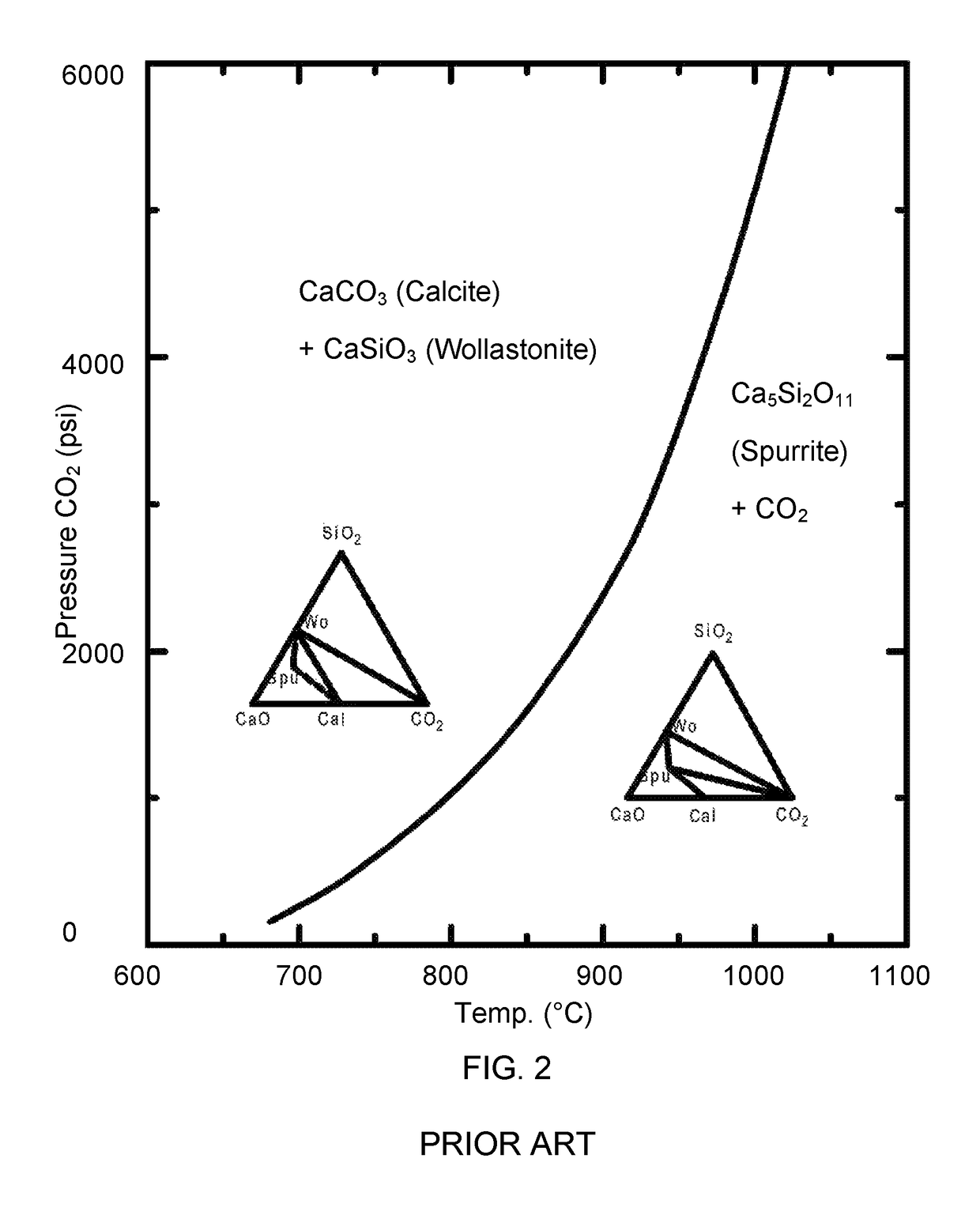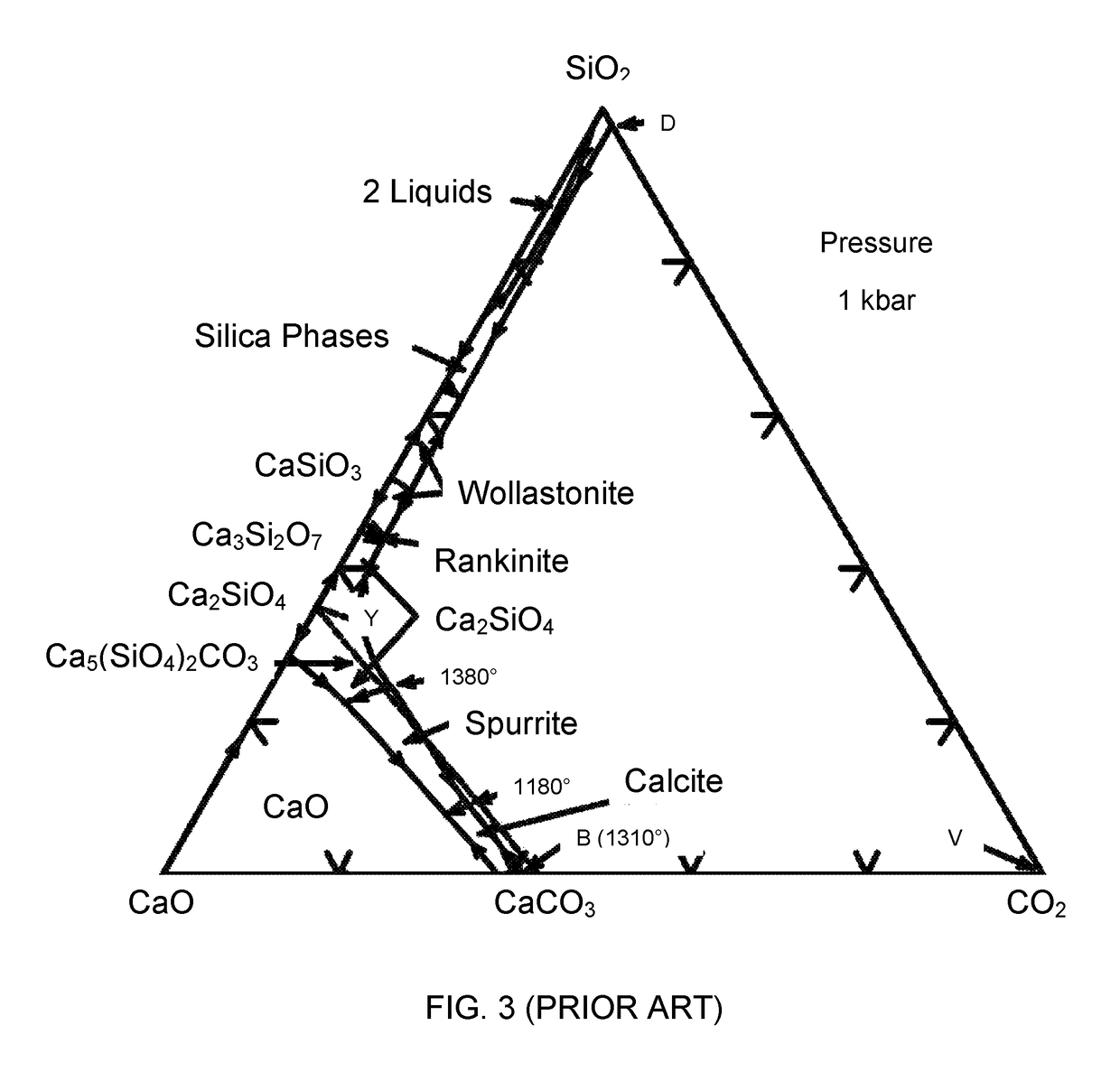Cement chemistries
a cement and pozzalonic technology, applied in the direction of calcium/strontium/barium carbonates, solid waste management, climate sustainability, etc., can solve the problems of source to source variation, abundance, and geographical dependence of sources
- Summary
- Abstract
- Description
- Claims
- Application Information
AI Technical Summary
Benefits of technology
Problems solved by technology
Method used
Image
Examples
example
[0137]A 4″×8″ cylinder was made with cement comprised of mainly melilite crystalline phase 80%, 5% larnite and 12% amorphous phase. The particle size distribution of the cement was, d10 3 microns, d50 11 microns, and d90 75 microns. The mixture of cement, sand and gravel was mixed with saturated tartaric acid solution and cast into a mold. The sample was cured for two days and tested for compression testing. The strength was 2000 psi.
[0138]By making such adjustments to the cementitious material, in some instances the modified cementitious material (e.g., with added Al, Mg and / or Fe) is found not to cure under reaction with only CO2 as the source of carbon dioxide, while it does react when the curing agent is tartaric acid, oxalic acid, or some reagent chemical that is synthesized from CO2.
[0139]In other embodiments, the reagent chemical synthesized from CO2 can be an organic acid or a compound that can be synthesized from CO2 alone or possibly with other precursor materials.
[0140]In...
PUM
| Property | Measurement | Unit |
|---|---|---|
| temperatures | aaaaa | aaaaa |
| compressive strength | aaaaa | aaaaa |
| compressive strength | aaaaa | aaaaa |
Abstract
Description
Claims
Application Information
 Login to View More
Login to View More - R&D
- Intellectual Property
- Life Sciences
- Materials
- Tech Scout
- Unparalleled Data Quality
- Higher Quality Content
- 60% Fewer Hallucinations
Browse by: Latest US Patents, China's latest patents, Technical Efficacy Thesaurus, Application Domain, Technology Topic, Popular Technical Reports.
© 2025 PatSnap. All rights reserved.Legal|Privacy policy|Modern Slavery Act Transparency Statement|Sitemap|About US| Contact US: help@patsnap.com



